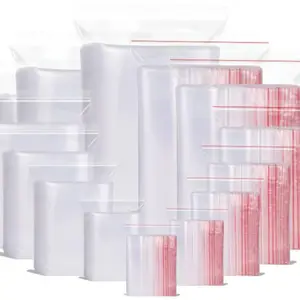

Greaseproof Disposable Customized Logo Size Food Grade Packaging Paper Sandwich Bread Dessrt Baking Bag Without Handle Kraft

Cheap Factory Price Food Grade Custom Printed Greaseproof Sandwich Hot Dog Packaging Brown or White Kraft Paper Bag


















A sandwich bag is a packaging design that facilitates food preservation and storage, leading to product packaging bag's creation. The sandwich bag used to contain and protect foods refers to the food film container that directly contacts with the foods.
The sandwich bag mainly acts as protection for foods. Physical protection: food stored in the beeswax sandwich bags needs to avoid extrusion, impact, vibration, temperature difference, and other phenomena. Shell protection: The small sandwich bag separates the food from oxygen, water vapor, stains, etc. Leakage protection is also a necessary element of packaging design. Some packages include desiccants or deoxidizers to extend shelf life. Vacuum packaging or air evacuation from the bag is also a significant food packaging method. The sandwich bag's primary function is preserving food's cleanliness, freshness and safety during its shelf life.
However, the sandwich bag can have versatile functions besides preservation. Consolidation: Stuffing the same type of food into a single package is an excellent way to save bulk. Conveying Information: Packaging and labeling tell people how the container or food will be used, transported, recycled, or disposed of. Marketing: Marketing often uses box labels to encourage potential buyers to purchase items. Safety: Packaging can play an essential role in reducing transport safety risks. Pouches can also prevent food from being returned to other goods. Some food packaging is strong and has tamper-evident markings that protect the merchant from loss. Bags may have labels such as laser markings, unique colors, SMS authentication, etc. In addition, retailers may have electronic monitoring labels on the bags to prevent theft, which are used to demagnetize the food at the shop exit when the consumer takes it to the shop. Convenience: Packaging may have features that make it easy to add, load and reuse.
Kraft paper is a biodegradable food packaging material, and its degradation will not release harmful gases to the environment; in line with the modern concept of environmental protection, consumers widely favor this packaging. Polyethylene bag body presents a translucent color and soft texture but good toughness. It has good water and oil resistance. Due to good water and air barrier performance, it is commonly used as a food packaging material. PE bags can package food with water and oil resistance. They are solid and durable, with strong sealing bottom and oversized bag mouth. OPP is clear, and have a transparent flat mouth. Large sandwich bag made of OPP can better show food in front of people, attract consumers' attention, highlight the product's characteristics, expand consumption, and be suitable for packaging foods in a variety of shapes. Frosted bags has good toughness, environmental protection and good anti-abrasive flower effect; they are not easily wrinkled or deformed, This material gives people a kind and soft feeling, and bright printing used in sandwich packaging can beautify the goods. Frosted haze creates a sense of mystery, which can attract customers and be conducive to promotions. PA (nylon) is challenging, wear-resistant and oil-resistant, and it has mechanical properties and good toughness. It also has excellent puncture resistance, a specific anti-mold and antibacterial effect, which can safely protect product's shelf life.